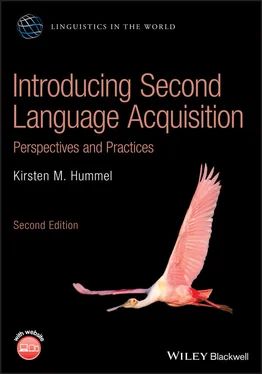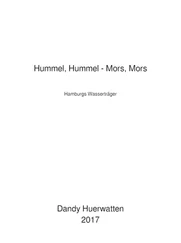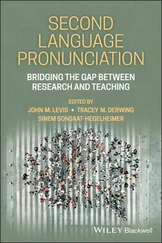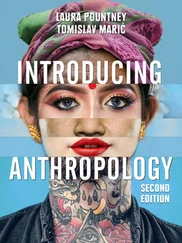30 Paradis, M. (2004). A Neurolinguistic Theory of Bilingualism. Amsterdam: John Benjamins.
31 Patterson, F.G. (1978). The gestures of a gorilla: language acquisition in another pongid. Brain and Language 5 (1): 72–97.
32 Petitto, L.A. and Marentette, P.F. (1991). Babbling in the manual mode: evidence for the ontogeny of language. Science 251: 1493–1496.
33 Piper, T. (1998). Language and Learning: The Home and School Years, 2e. New Jersey: Prentice Hall.
34 Polka, L. and Werker, J.F. (1994). Developmental changes in perception of non‐native vowel contrasts. Journal of Experimental Psychology: Human Perception and Performance 20 (2): 421–435.
35 Rescorla, L.A. (1980). Overextension in early language development. Journal of Child Language 7: 321–335.
36 Rumelhart, D. and McClelland, J. (1986). On learning the past tenses of English verbs. In: Parallel Distributed Processing, vol. I (eds. D. Rumelhart, J. McClelland and the PDP Research Group), 216–271. Cambridge, MA: MIT Press.
37 Savage‐Rumbaugh, E.S., Murphy, J., Sevcik, R.A. et al. (1993). Language comprehension in ape and child. Monographs of the Society for Research in Child Development 58 (233): 1–221.
38 Searchinger, G. (1995). Acquiring the Human Language: Playing the Language Game. The Human Language (Part II), Video. New York: Ways of Knowing, Equinox Films.
39 Vihman, M.M., Kay, E., de Boysson‐Bardies, B. et al. (1994). External sources of individual differences? A cross‐linguistic analysis of the phonetics of mothers' speech to 1‐year‐old children. Developmental Psychology 30: 651–662.
40 Vouloumanos, A. and Werker, J.F. (2007). Listening to language at birth: evidence for a bias for speech in neonates. Developmental Science 10: 159–164.
41 Werker, J. and Tees, R. (1984). Cross‐language speech perception: evidence for perceptual reorganization during the first year of life. Infant Behaviour and Development 7: 49–63.
further reading and viewing
1 Berko Gleason, J. and Bernstein Ratner, N. (2017). The Development of Language, 9e. Boston: Pearson.A thorough review of various aspects of first language acquisition. Comprehensive examination of phonological, morpho‐syntactic, vocabulary, and pragmatic aspects of language acquisition. Includes a glossary as well as project ideas and references for further reading.
2 Clark, E.V. (2016). First Language Acquisition, 3e. New York: Cambridge University Press.A classic volume written by a renowned scholar, with numerous examples illustrating first language acquisition.
3 Eliot, L. (2000). What's Going On in There? How the Brain and Mind Develop in the First Five Years. New York: Bantam.Written by a neurobiologist, this book goes beyond language development to explore various aspects of early child development, and references the nature vs nurture debate.
4 Foster‐Cohen, S.H. (1999). An Introduction to Child Language Development. New York: Longman.A concise yet thorough overview of first language acquisition. The book includes concrete exercises and discussion questions related to chapter topics.
5 Foster‐Cohen, S.H. (ed.) (2009). Language Acquisition. London: Palgrave Macmillan.Edited book with chapters from various scholars on first language acquisition.
6 Golinkoff, R.M. and Hirsch‐Pasek, K. (1999). How Babies Talk: The Magic and Mystery of Language in the First Three Years of Life. New York: Dutton.An informative overview of child language acquisition which includes advice for parents who want to know more about their child's language learning.
7 O'Grady, W. (2005). How Children Learn Language. Cambridge: Cambridge University Press.A concise and accessible overview of first language acquisition.
8 Pinker, S. (1994). The Language Instinct. New York: W. Morrow and Co.A wide‐ranging, thought‐provoking and engagingly written book about language acquisition. This book demolishes a number of popular beliefs about child language acquisition.
1 Casby, M. (n.d.). Child Language Development Video Companion. Available at: https://www.msu.edu/~casby/langdevidcompShort videos illustrating child language acquisition at different ages.
2 Gopnik, A. (2011). What Do Babies Think? Available at: https://www.ted.com/talks/alison_gopnik_what_do_babies_thinkA talk on infant thinking capacities by psychologist Alison Gopnik (TED, Technology, Entertainment, Design series).
3 Kuhl, P. (2010). The Linguistics Genius of Babies. Available at: http://www.ted.com/talks/patricia_kuhl_the_linguistic_genius_of_babiesA talk on language acquisition in young infants by psychologist Patricia Kuhl (TED Technology, Entertainment, Design series).
4 Murza, K. (n.d.). Noam Chomsky Speaking on Universal Grammar and the Genetics of Language. Available at: http://www.youtube.com/watch?v=vbKO‐9n5qmc
5 Pinker, S. (2002). The Blank Slate: The Modern Denial of Human Nature. Available at: http://video.mit.edu/watch/the‐blank‐slate‐the‐modern‐denial‐of‐human‐nature‐9857A video from an MIT speakers' series in which linguist and psychologist Steven Pinker discusses his book The Blank Slate: The Modern Denial of Human Nature (2002), which argues against the view that humans come into the world without any prewiring, or, in other words, as a “blank slate.”
6 Pinker, S. (2008). Human Nature and the Blank Slate. Available at: https://www.youtube.com/watch?v=CuQHSKLXu2cTED talk by Pinker about controversies following the publication of his book The Blank Slate.
7 Roy, D. (2011). The Birth of a Word. Available at: https://www.ted.com/talks/deb_roy_the_birth_of_a_word?language=enA talk by Deb Roy, MIT researcher, who observed how his own child acquired words over time.
Конец ознакомительного фрагмента.
Текст предоставлен ООО «ЛитРес».
Прочитайте эту книгу целиком, купив полную легальную версию на ЛитРес.
Безопасно оплатить книгу можно банковской картой Visa, MasterCard, Maestro, со счета мобильного телефона, с платежного терминала, в салоне МТС или Связной, через PayPal, WebMoney, Яндекс.Деньги, QIWI Кошелек, бонусными картами или другим удобным Вам способом.












